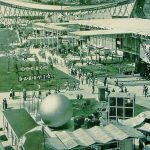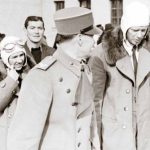If you think Ban Jelačić Square is crowded during špica on Saturdays nowadays, take a look at what the situation was like in the late 1920s.
The Square wasn’t a proper square yet, but a fairground where people sold and bought goods and groceries.One of the most typical figures that you can see in the video are the ladies with baskets on their heads, the laundresses of Šestine.
Before the first washing machines appeared in Zagreb, laundry women would collect bundles of laundry from the people of Zagreb and take it with them to the the village of Šestine in baskets on their heads. They would wash it there, at specific points of the creek where water was the cleanest, make it crisp white and then bring it back to Zagreb.
Some even say that this is the reason why Zagreb is commonly referred to as bijeli Zagreb grad (the White City).
They were replaced by washing machines in the late ’60s, but the laundresses of Šestine still remain one of the symbols of the city and a reminder of times gone by.
https://www.youtube.com/watch?v=bSY6zC0gpBU









